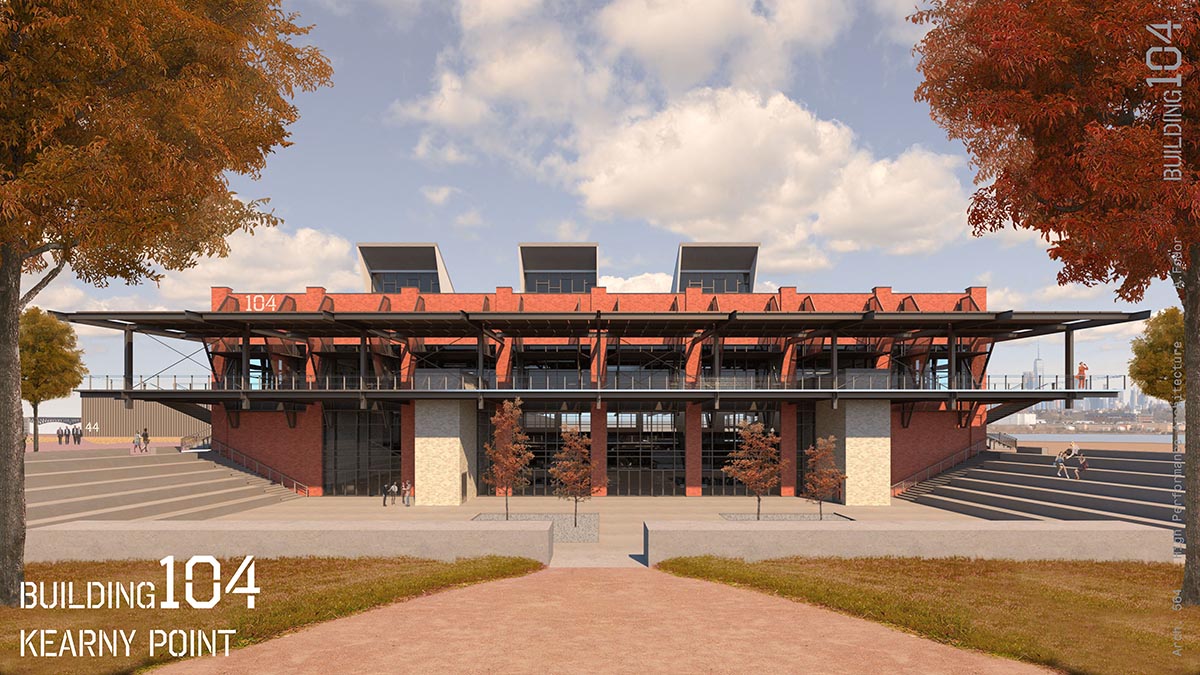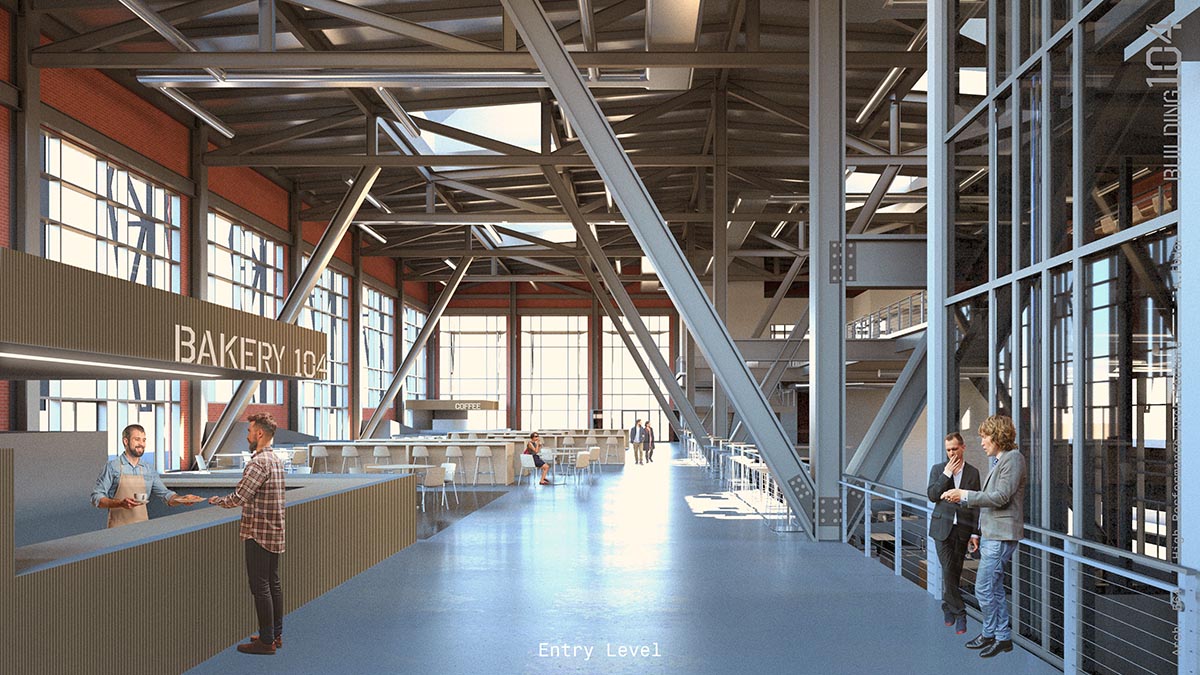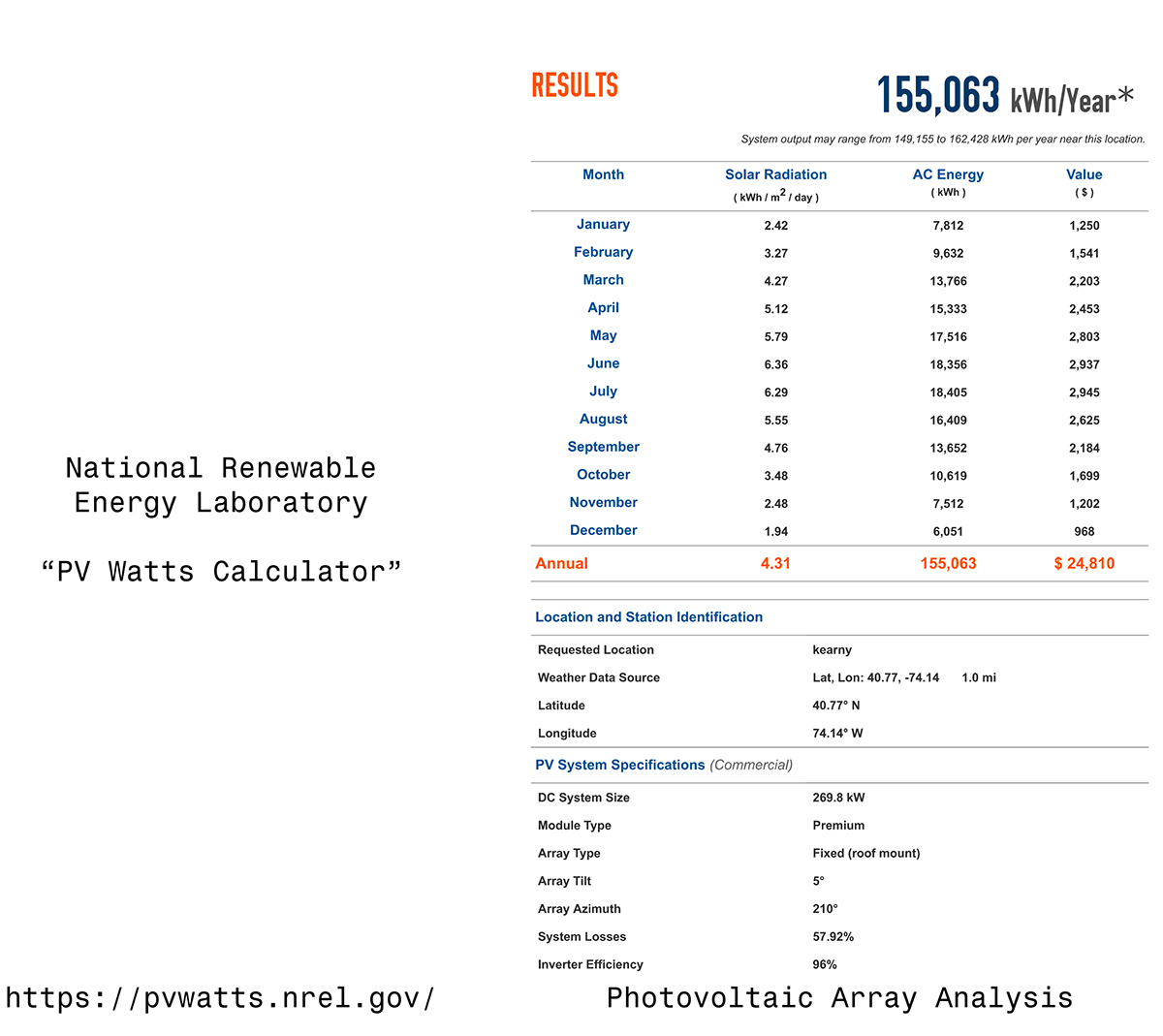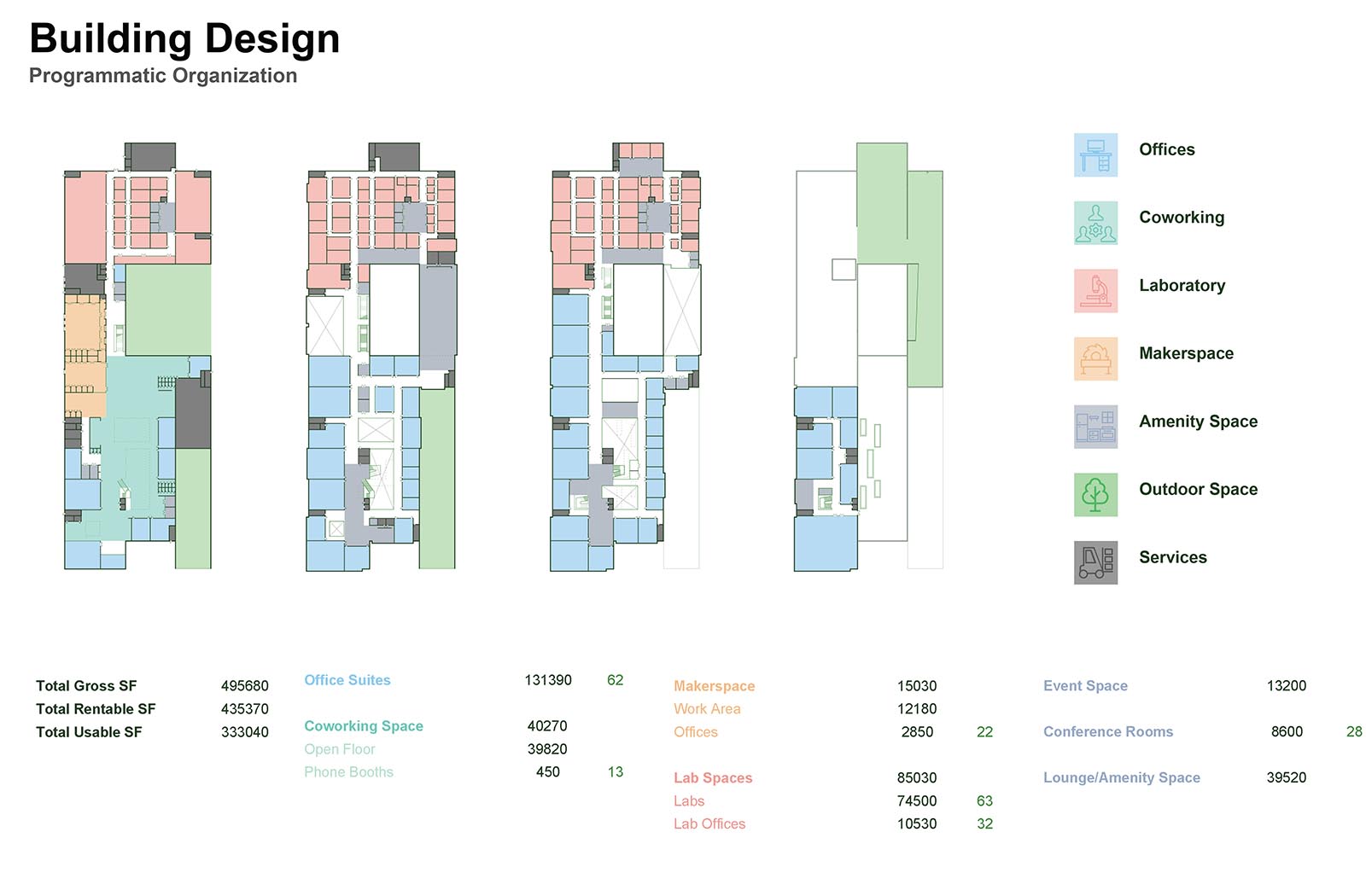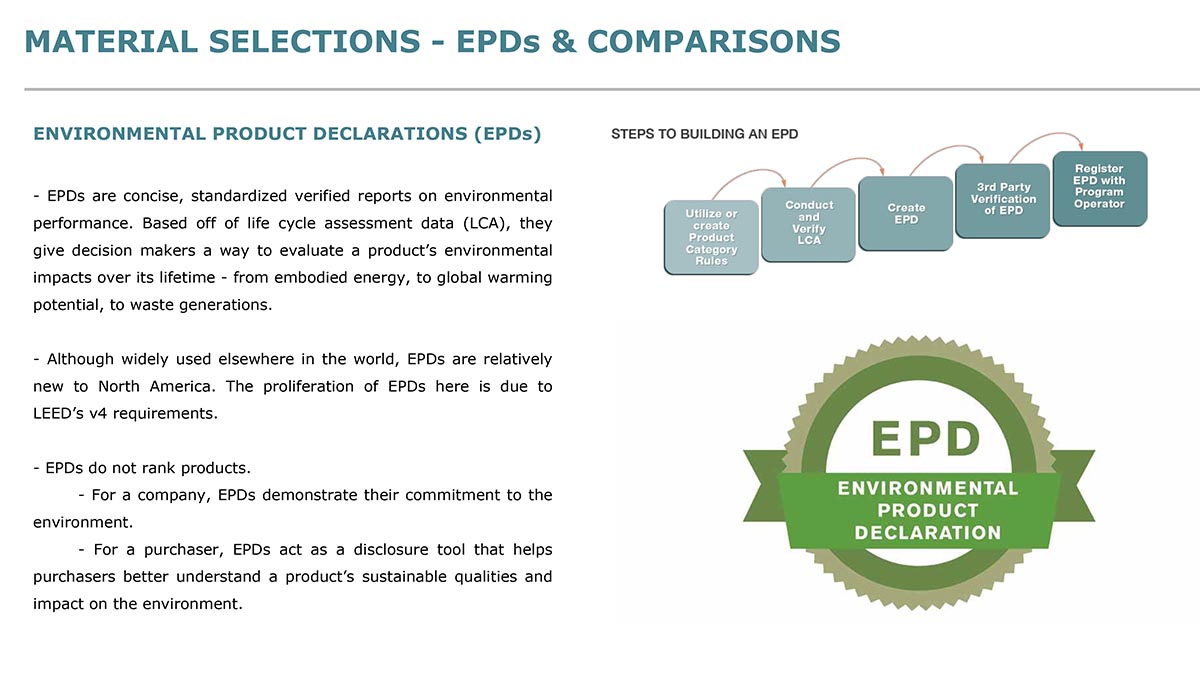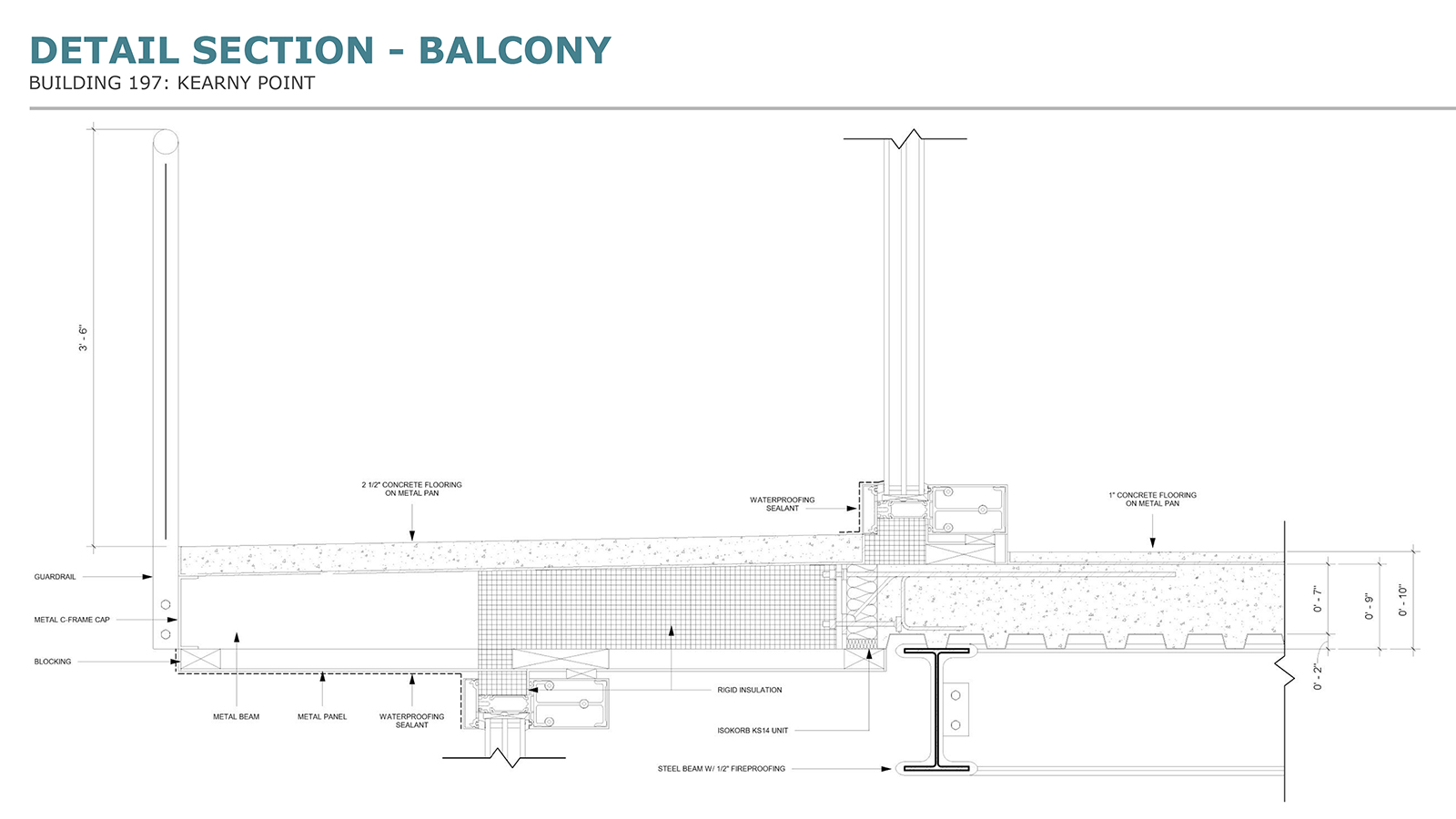This Integrated Design Studio investigated high-performance and low-energy-footprint architecture. Students researched strategies and technologies for zero-energy, zero-carbon, and resilient buildings, and learned how to integrate the state-of-the-art precedents into their own designs. Designs addressed a broad range of scales, from site conditions and programming to construction assemblies and building components.
Shared Workspaces: Area and Occupancy
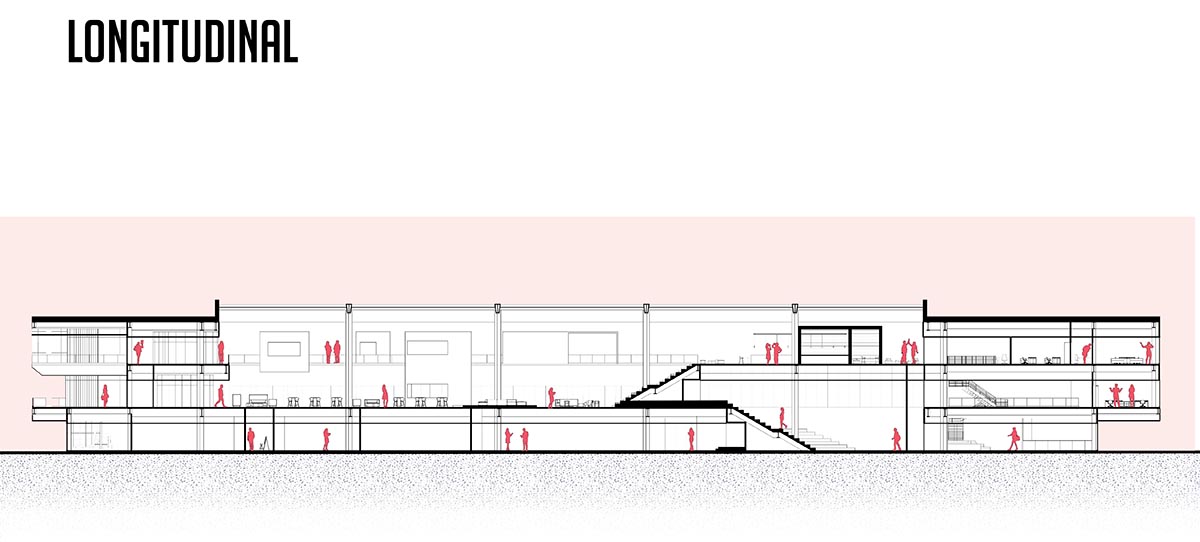
Longitudinal Section: Arrangement of Shared Workspaces. Project developed by Olivia Szymkowski and Natalia Wilk NJIT‘19.

Co-working Spaces. Extensive us of glass partitions allows for semi-private meeting rooms while also affording opportunities for collaboration. Glass partitions also open spatially interior volumes and allow for secondary daylighting (Olivia Szymkowski and Natalia Wilk).
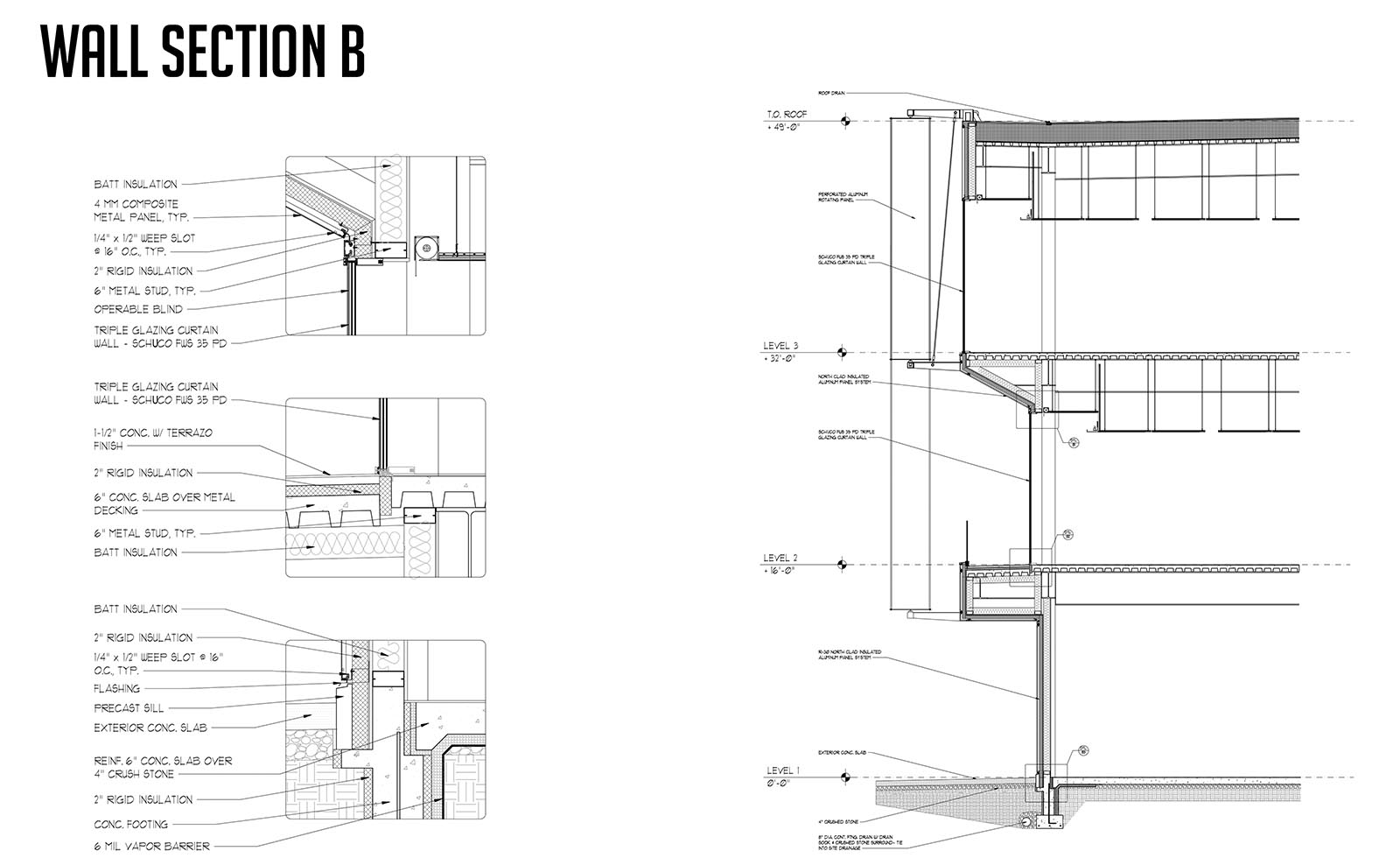
Wall Section, West Facade (right), Construction Details (left). (Olivia Szymkowski and Natalia Wilk)
Kearny Point, Kearny, NJ, was the location for the integrated studio. The site is being developed by Hugo Neu Developers/Corporation, based on the master plan by WXY Studio. Students studied new modes of shared workspaces, akin to the WeWorks entrepreneurship model, for technology start-ups and business incubators centered around collective assets, such as a maker space and wet lab.
 Building Diagram (Andrew Fodor)
Building Diagram (Andrew Fodor)
Beyond meeting NAAB’s basic Student Performance Criteria (SPC), students used a variety of software and simulation tools, such as Sefaira, Tally, and Climate Consultant, to develop designs that exceeded current code and professional practice standards. Projects were delivered through BIM platforms (Revit and BIM360), through physical prototypes of selected assemblies, and with the use of immersive virtual reality (VR) technologies.
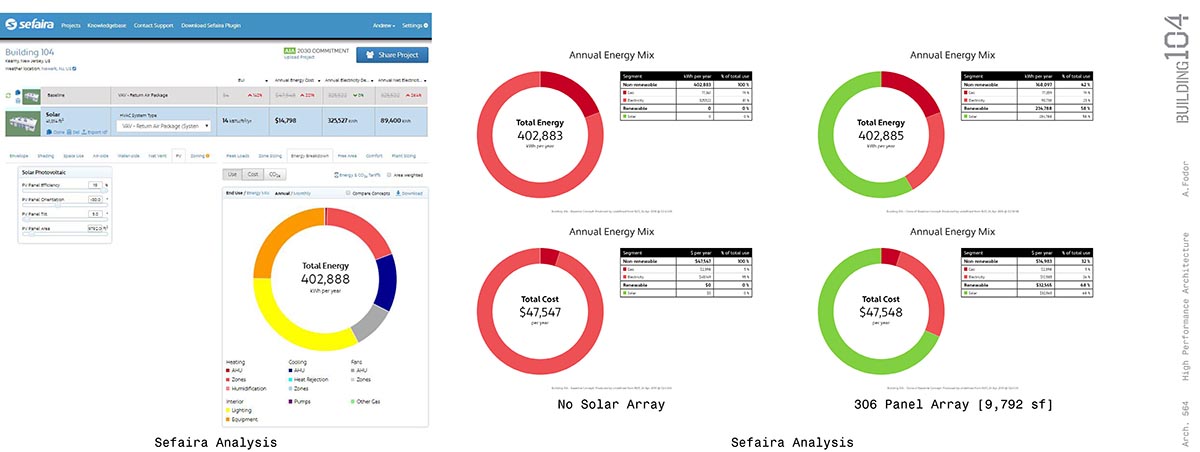
Energy use and performance analysis with Sefaira plugin for AutoDesk Revit Study conducted by Andrew Fodor.
Immersive virtual reality (VR) experience developed with Revit and VR plugin (Erin Heidelberger).

Assembly Details (left) and Comparison of the Conventional R-18 and High-Performance R-30 Wall Assemblies (right) by Erin Heidelberger.
Enscape walk-through VR experience capture, project by Angelo Capobianco & Ernessa François




